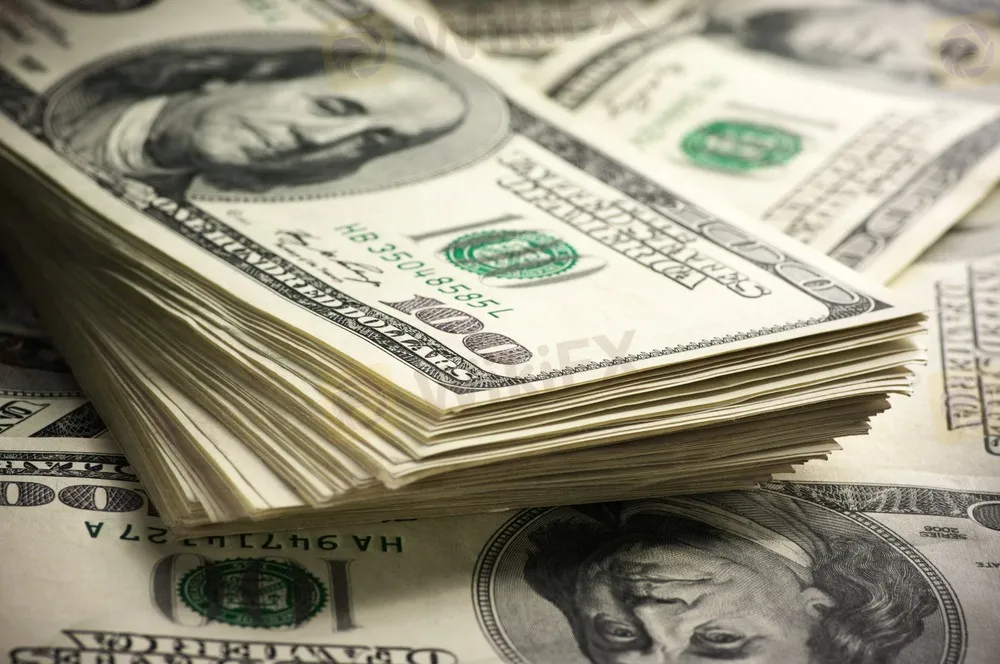简体中文
繁體中文
English
Pусский
日本語
ภาษาไทย
Tiếng Việt
Bahasa Indonesia
Español
हिन्दी
Filippiiniläinen
Français
Deutsch
Português
Türkçe
한국어
العربية
Dollar holds firm as risk aversion hammers Canadian dollar, Aussie
Abstract:Minutes of the Fed's July meeting, released on Wednesday, showed officials largely expect to reduce their monthly bond buying later this year
- Kevin Buckland
TOKYO (Reuters) - The safe-haven U.S. dollar hovered near a 9-1/2-month high against major peers on Friday, buoyed by fears that the Delta coronavirus variant could delay the global economic recovery.
The greenback has also been boosted by expectations the Federal Reserve could still start to taper stimulus this year, even with COVID-19 infections surging this month in the United States.
The dollar index, which measures the currency against six rivals, was little changed at 93.544 from Thursday, when it touched 93.587 for the first time since early November. For the week, it's on track to gain 1.1%, the most in two months.
The Canadian dollar dropped to a fresh six-month low of C$1.2832 amid a plunge in oil prices on those economic growth worries, while the Aussie and New Zealand dollars languished near nine-month lows.

“Risk aversion in the air has buoyed the greenback, with pro-growth currencies bearing the brunt of it,” Rodrigo Catril, a strategist at National Australia Bank (OTC:NABZY), wrote in a client note.
The yen, another safe-haven currency, slipped 0.1% to 109.87 per dollar on Friday, but remains in the centre of its trading range of the past six weeks.
The euro ticked up 0.05% to $1.6825, but still traded near the 9 1/2-month low of $1.16655 reached overnight. It is down 0.94% this week, the most since mid-June.
Minutes of the Fed's July meeting, released on Wednesday, showed officials largely expect to reduce their monthly bond buying later this year, although divisions remain on the timing and pace of a taper, and whether inflation, joblessness or the coronavirus pandemic pose a bigger risk to economic recovery.
A decline in debt purchases by the Fed is widely considered positive for the dollar as it is expected to raise U.S. government bond yields, making it more attractive for investors to hold dollar-denominated assets.
The Aussie rose 0.1% to $0.7155 on Friday, but was still close to the 9 1/2-month low of $0.7143 reached on Thursday. It has fallen 3% this week, on track for its worst performance since September of last year, with most of the country under lockdown to battle a COVID-19 outbreak.
New Zealand's kiwi ticked up 0.1% to $0.6832, but remained near Thursday's nine-month trough of $0.6810. It has sunk 2.9% for the week, also the worst since September, after its central bank delayed a rate hike, shifting gears as the country went into a snap COVID-19 lockdown.
Sterling touched a fresh one-month low of $1.3628 on Friday, before trading 0.07% higher at $1.3638. It has fallen 1.64% this week, which would be the biggest drop for two months.
========================================================
Currency bid prices at 0101 GMT
Description RIC Last U.S. Close Pct Change YTD Pct High Bid Low Bid
Previous Change
Session
Euro/Dollar
$1.1681 $1.1677 +0.05% -4.39% +1.1684 +1.1675
Dollar/Yen
109.8300 109.7900 +0.05% +6.34% +109.8800 +109.8400
Euro/Yen
128.30 128.12 +0.14% +1.09% +128.3700 +128.1600
Dollar/Swiss
0.9179 0.9188 -0.09% +3.76% +0.9189 +0.9180
Sterling/Dollar
1.3638 1.3631 +0.06% -0.17% +1.3640 +1.3628
Dollar/Canadian
1.2816 1.2831 -0.12% +0.64% +1.2832 +1.2816
Aussie/Dollar
0.7154 0.7147 +0.10% -7.00% +0.7156 +0.7145
NZ
Dollar/Dollar 0.6831 0.6827 +0.11% -4.83% +0.6836 +0.6815
All spots
Tokyo spots
Europe spots
Volatilities
Tokyo Forex market info from BOJ

Disclaimer:
The views in this article only represent the author's personal views, and do not constitute investment advice on this platform. This platform does not guarantee the accuracy, completeness and timeliness of the information in the article, and will not be liable for any loss caused by the use of or reliance on the information in the article.
Read more

Taper talk, Delta cases push down oil, boost dollar
Oil fell to its lowest levels since May while the U.S. dollar surged to a nine-month high, as rising COVID-19 cases worldwide and the prospect of a looming Federal Reserve taper threw cold water on risk appetites.

PH: BSP relaxes rules in buying dollars as surplus piles up amid weak economy
the Bangko Sentral ng Pilipinas (BSP) has decided to make it easier for locals to buy foreign exchange—a measure that could help rein in the peso from rising to unhealthy levels.
WikiFX Broker
Latest News
CFI Partners with MI Cape Town, Cricket Team
Doo Financial Expands Reach with Indonesian Regulatory Licenses
Geopolitical Events: What They Are & Their Impact?
Volkswagen agrees deal to avoid Germany plant closures
Webull Canada Expands Options Trading to TFSAs and RRSPs
CySEC Launches Redesigned Website Packed with New Features
WikiFX Review: Is PU Prime a decent broker?
TradingView Launches Liquidity Analysis Tool DEX Screener
MultiBank Group Wins Big at Traders Fair Hong Kong 2024
WikiEXPO Global Expert Interview: Simone Martin—— Exploring Financial Regulation Change
Currency Calculator


